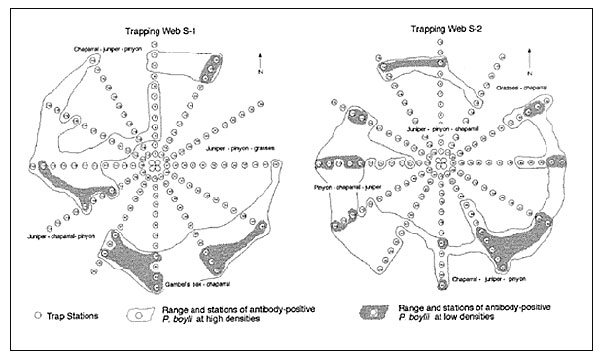Volume 5, Number 1—February 1999
Research
Long-Term Hantavirus Persistence in Rodent Populations in Central Arizona
Figure 4

Figure 4. Ranges and trap stations of hantavirus antibody–positive Peromyscus boylii during high and low population densities. Each web covered 3.1 ha. Trap stations within ranges were occupied by antibody-negative and antibody-positive mice at various times. High densities represent 13 months (June 1995 to June 1996), and low densities represent 13 months (September 1996 to September 1997).
Page created: December 10, 2010
Page updated: December 10, 2010
Page reviewed: December 10, 2010
The conclusions, findings, and opinions expressed by authors contributing to this journal do not necessarily reflect the official position of the U.S. Department of Health and Human Services, the Public Health Service, the Centers for Disease Control and Prevention, or the authors' affiliated institutions. Use of trade names is for identification only and does not imply endorsement by any of the groups named above.